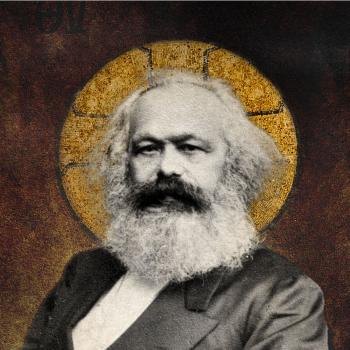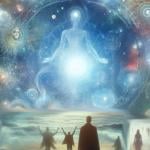Reflection by Jim Burklo
Desert Stewardship Project event, 9/6/14, Joshua Tree National Monument
A young Muslim woman student at the University of Southern California once told me that the reason she fasts at Ramadan is to manifest an essential human quality. Human beings, she said, are the only creatures that are able to restrain themselves from doing what they want to do. When animals are hungry, they find something to eat and eat it. When they are thirsty, they find something to drink and they drink it. Humans are humans because they can get hungry and thirsty but, if they choose, restrain themselves from eating or drinking. This capacity for deferral of immediate gratification in many other areas of life is what makes civilization possible. So for her, fasting at Ramadan was an exercise to develop her capacity for restraint.
Fasting is an example of what is known in the Christian tradition as the “via negativa”, the way of negation that leads to deeper communion with God. It sounds negative, but really it is aimed at a positive end. It’s by recognizing what is not God that we get closer to what is. It’s by letting go of attachments to our ideas about God that we begin to have intimacy with the divine. The Ascent of Mt Carmel is a classic work of Christian spirituality written by the 16th century Spanish mystic St. John of the Cross, who illustrated his poem with a diagram depicting the path up the mountain. The way to mystical union with God was marked with the same word, over and over: nada, nada, nada, nada, nada. Nothing, nothing, nothing, nothing. The path up the mountain to God was littered with all the desires and things and ideas that were not God, left behind, one at a time, by the spiritual pilgrim.
“Now faith is the substance of things hoped for, the evidence of things not seen.” This passage from Hebrews (11: 1) in the New Testament is another illustration of the via negativa. Faith is what’s left when the visible, the definable, the comprehensible are dropped on the way up the desert mountain to meet God face to face.
We come to the desert at least as much for what is not here as much as for what is. Monastics of every religion are drawn to it. Moses encountered God in a bush on a desert mountain. The first theologians of Christianity were known as the Desert Fathers. In wilderness they prayed, meditated, contemplated – uncluttering their hearts and minds in an uncluttered space. Mohammed went to a desert cave and there he waited until the Angel Gabriel dictated the Koran to him. Around the same time, Buddhist monks retreated to the mountainous deserts of Central Asia to meditate.
In the film, Lawrence of Arabia, a British officer encounters T. E. Lawrence, who’s just come back from a military campaign with the Arabs and is wearing a filthy robe. “What attracts you personally to the desert?” the officer asks. Lawrence replies: “It’s clean.” One may return from a hike in the desert with dust all over one’s clothes and grimy sweat caked on one’s skin, but with a soul cleansed by an out-of-ego experience. The scale and sweep of the desert makes human hubris look like the folly that it is. There is nothing that makes us more humane than an overwhelming 360 degree encounter with what is utterly beyond the human. Paul’s letter to the Philippians in the New Testament says that the Christ emptied himself in order to serve others. The desert is where he went to get spiritually clean, going there by himself to meditate for 40 days before starting his ministry.
There’s not what is without what’s not. And nowhere is this more obvious than here in Joshua Tree, where the stark vast emptiness paradoxically reveals a rich abundance of life and energy and beauty. All that lives stands out in shadowed, dramatic relief. A little lizard is made majestic by the huge bare rock on which it basks in the rising sun. A Joshua tree is an explosion of shards of green against the polished blue mirror of the vast sky. Wind whispers through a lonesome creosote bush, spreading its distinct scent with the drying of the morning dew. The silence is as huge as it is intimate, drawing the soul closer to its Source, and at the same time inviting it to commune with the whole enormous landscape and what lies unseen beyond. The severe serene beauty of this environment resonates with our innate aesthetic sensibilities. The desert haunts us and hallows us, touching us in an inner place we can hardly name. The farther we walk into it, the more its beauty aims beyond itself and into the ineffable essence of existence.
All spiritual seekers are called to cherish the desert as a sanctuary for the life it contains, and as a sanctuary for the human soul. A thin place where God’s nearness is palpable, where the hustle and jumble of distractions that get in the way of intimacy with Ultimate Reality are farther and farther away.
We are called to preserve even the parts of the desert that we’ve never seen nor ever will visit. Because that’s what makes us human: to refrain from despoiling the earth just because we happened to be in the mood that day. This is what makes us human: to have faith in that which we cannot see. Faith in what and who is beyond us, beyond our comprehension. We must make room, lots and lots and lots of room, for life to flourish – especially in the harshest environments like this one. Where life is most precarious, here in this arid land, we see with crisp clarity how precious it is.
So as faithful people of all the world’s religions we commit ourselves to preserving this sacred desert for future generations, not just of people, but of lizards and tortoises and jackrabbits and cholla cacti. As St Paul said in the letter to the Romans, “hope that is seen is not hope. For who hopes for what is seen? But if we hope for what we do not see, we wait for it with patience.” With patience and persistence, let us hope for the future of the desert landscape here and beyond the horizon. Let us take time in the desert to wait with patience for spiritual union with the divine source of all life.












